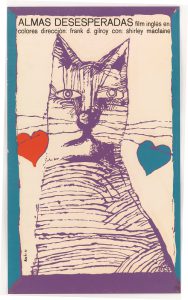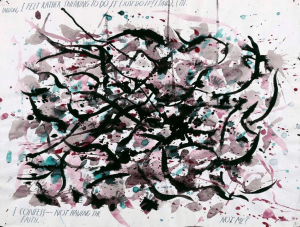La Biennale del disegno al Fellini Museum
4 maggio – 28 luglio 2026

Palazzo del Fulgor
2° e 3° floor
edited by Luigino Bardellotto, Adolfo Conti e Patrizio De Mattio

Cartel de cine means playbill in Spanish, but in Cuba it means much more.
Cuba, 1959. It is a period of political and social, but also artistic revolution. The first protagonist is the cinema, as an innovative and anti-commercial art form.
The way of communicating cinema also changes: even film posters had to be rethought, avoiding the established canons (big star faces, mother scenes, suggestive slogans) of traditional film posters. The new carteles (produced in 51 x 76 cm screen-printing technique) were in this way freed of their advertising function and left graphic designers complete freedom in interpreting the film, contributing to a veritable visual and conceptual revolution for cinema audiences.
El cartel de cine became to all intents and purposes a masterpiece of art displayed in the streets.
The exhibition is structured from 1959 to 1979 in a diachronic sense, with a final section dedicated to today’s production. The posters of the most important authors are exhibited along with photographs, newspapers, sketches and preparatory layouts. All the original material comes from the “Luigino Bardellotto – Centro Studi Cartel Cubano” collection in San Donà di Piave, the world’s largest private collection of Cuban posters.
Palazzo del Fulgor
1° piano
edited by Andrea Lo Savio

The Rose of Bagdad is the first legendary Italian animated feature film (a record shared with Nino Pagot’s I Fratelli Dinamite). It was made between 1940 and 1949 and it was the first Italian film to be shot entirely in colour using the technicolour technique.
Thousands and thousands of drawings (including sketches, layouts and production drawings) and “rodovetri” (transparent sheets painted on the back and applied to the backdrops to allow the movements of the characters to be photographed, frame by frame), several hundred detailed backdrops, even in large format, make up the extraordinary paper heritage that still allows us today, in the digital age, to fully grasp the extraordinary work carried out for the making of the film (76 minutes long for 120 thousand sequences at step 1 – up to 24 drawings for one second of animation).
Around thirty original works from private lenders, of extraordinary quality, are on show to the public for the first time.
Castel Sismondo
Ala di Isotta

EVERYTHING SPOKE SO VIVIDLY, drawings from the FRAC – Picardie Collection, Amiens.
The FRAC in Amiens is considered one of the most important, if not the most important public collection in Europe specialising in drawing. It brings together 1,300 works by 250 French and international artists, documenting – at the highest level of excellence – the various facets of contemporary drawing from the post-World War II period to the present day.
Everything spoke so vividly, chosen as the title of the exhibition in Rimini, recalls the feeling of dizziness experienced by the French writer Stendhal while on the Grand Tour in Italy in 1817.

